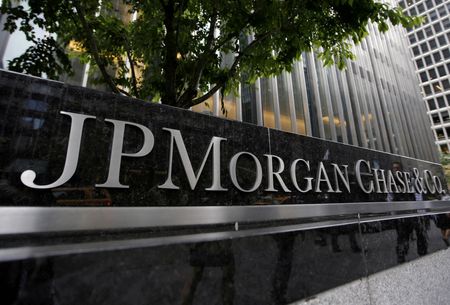
(Reuters) – JPMorgan Chase & Co, the biggest U.S. bank by assets, said on Monday it will buy most of First Republic Bank’s assets after U.S. regulators seized the troubled bank.
The collapse marks the third major U.S. lender to fail in less than two months, after a week of panic which saw First Republic lose 75% of its market value as its future turned murkier.
Here is what analysts are saying about the rescue deal:
JAMEEL AHMAD, CHIEF ANALYST AT COMPAREBROKER.IO
“Confidence in the banking sector has now weakened further, which means that investors should expect for financial markets to remain on the defensive.”
“Assets such as the U.S. dollar and Japanese yen will be on the radar as traders look for an asset of safety. Gold prices in particular have been on a gradual incline for much of 2023 so far, and such worrying indications of more stress in the banking sector can be viewed as a potential catalyst to add the needed fuel to a rally that has run out of fumes in recent weeks.”
“As controversial as it will be, bitcoin price reaction should also be watched in the event that this confidence crisis leads traders to seek an unconventional asset.”
“This development will most likely not prevent the Fed from raising U.S. interest rates this week as largely expected. However, what investors will want to hear from the U.S Federal Reserve and Chair Jerome Powell specifically is what the central bank really thinks about the clear stresses visible within the banking sector.”
BARCLAYS
“For JPM, we believe the purchase is modestly accretive to EPS and tangible book value, has manageable risk and can be additive to its wealth management franchise.”
“This marks second largest failure on record. Still, unlike Silicon Valley Bank and Signature Bank, the FDIC had a buy waiting in the wings. In fact, the FDIC noted it was a highly competitive bidding process.”
“In addition, the FDIC estimates that the cost to the Deposit Insurance Fund (DIF) of FRC will be about $13 billion. This appears less than expected … while it’s never a good thing to see a bank fail, this process appears much smoother than the prior two.”
R. SCOTT SIEFERS, MANAGING DIRECTOR, AND FRANK WILLIAMS, RESEARCH ANALYST AT PIPER SANDLER
“The deal includes modest financial benefits, but to us it is more significant for the reputational benefits insofar as it further solidifies JPM as the go-to industry leader in times of turmoil.”
“JPM has now positioned itself as an industry champion through two crises (buying Bear Stearns and Washington Mutual during the financial crisis, and now FRC this time around). It had already been the go-to deposit destination for nervous customers, and now it is officially taking a problem institution out of the game and easing concerns again.”
“The only worry we have is the at-present unknowable. JPM was already a hugely significant player that has now managed to make itself even more so at a time when ‘too-big-to-fail’ is still a political concern. We have a tough time imagining what one might find to criticize about an enormously strong bank that was apparently the best-positioned name in the country to deal with turmoil, but we would not be surprised to see some sort of unfortunate blow-back at some point.”
THOMAS HAYES, CHAIRMAN AND MANAGING MEMBER AT GREAT HILL CAPITAL
“When it was just SVB, it was easy to blame management. However, now that we see the pattern it is evident that the Fed has moved too far, too fast and is breaking things.”
“While the market has priced in another hike this week, we think the developments over the weekend will cause the FOMC (Federal Open Market Committee) to be more prudent with their guidance and respect the message of the market.”
“We would not be surprised to see a ‘pause’ after this final hike. Markets should take today’s news in stride knowing that the repeated bank failures should now have the Fed back on its heels and defanged moving forward.”
(Reporting by Manya Saini, Siddarth S, Reshma Rockie George and Arpan Varghese in Bengaluru; Compiled by Niket Nishant; Edited by Shounak Dasgupta)

